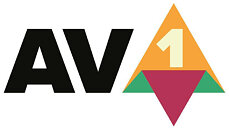Noble Launches Their Most Advanced TWS Earbuds Ever, the FoKus Rex5 with Five Drivers
US based Noble is happy to announce the latest addition to its wide range of high-end true wireless earbuds. Introducing the FoKus Rex5 hybrid five-driver TWS with Active Noise Cancelling (ANC), Noble's most advanced product to date and first collaboration with Audiodo's sound personalisation software.
Boasting a hybrid five driver configuration consisting of 1x dynamic, 1x planar, and 3x balanced armature drivers - the FoKus Rex5 has been under development for some time now, and the final result is a feature rich TWS implementing new technology rarely seen in the competition. The Noble FoKus Rex5 will be available to pre-order on 26th November and shipping on 29th November from selected retailers worldwide for $449/£419/€499.
Boasting a hybrid five driver configuration consisting of 1x dynamic, 1x planar, and 3x balanced armature drivers - the FoKus Rex5 has been under development for some time now, and the final result is a feature rich TWS implementing new technology rarely seen in the competition. The Noble FoKus Rex5 will be available to pre-order on 26th November and shipping on 29th November from selected retailers worldwide for $449/£419/€499.
















